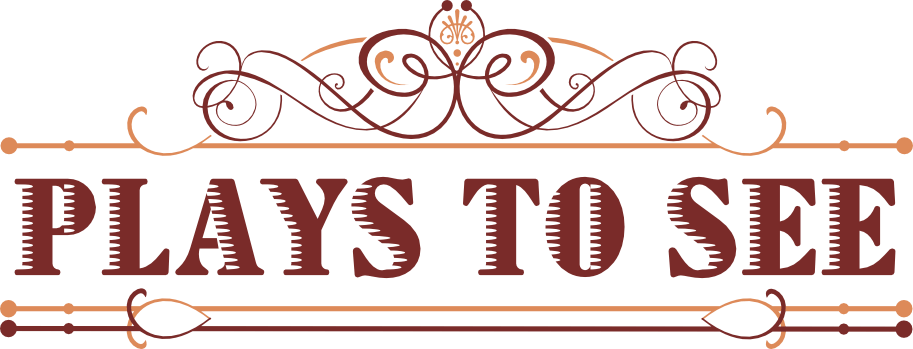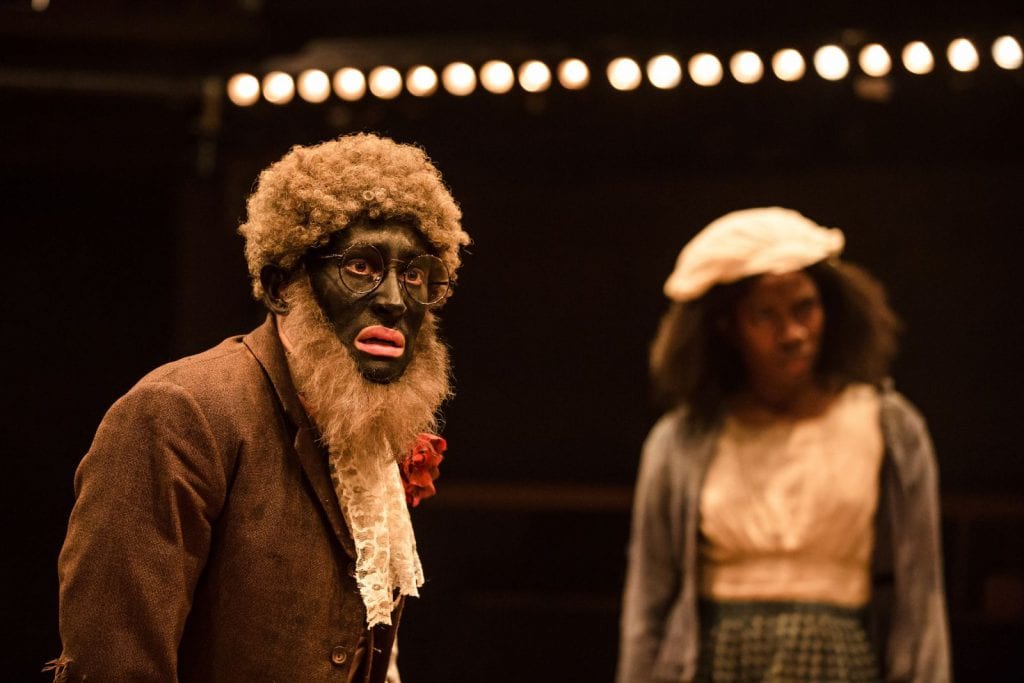Is Boucsploitation a thing now? Branden Jacobs-Jenkins’ relationship with Irish playwright Dion Boucicault is clearly a complex one, perhaps more complex than is conveyed by having them shout “Fuck you!” into each other’s faces several times, as happens between scenes one and two of An Octoroon. Scene one had the playwright (in fact actor Ken Nwosu) introducing himself and explaining that in mounting a production of Boucicault’s The Octoroon, he was hampered by white actors refusing to participate unless their character’s racism was leavened by a monologue about how conflicted they were about it. Therefore he whites up to play both the hero George and the villain M’Closkey, Boucicault himself reds up to play native American Wahnotee and his assistant blacks up to play the two black male characters Pete and Paul.
Pete is something of an Uncle Remus stereotype, and here begins the first of the play’s many postmodern games. In his opening monologue, BJJ bemoans the lot of a black playwright, accused of “deconstructing” traditional African folktales when all he did was write a simple story about talking animals. And yet here we clearly have Br’er Rabbit, at one point even shuckin’ and jivin’ to a slowed-down spiritual in case anyone missed the point. Alistair Toovey’s other character Paul is perhaps even more of a stereotype, an excitable and acrobatic “pickaninny” whose best friend is an “injun” who must at all costs be kept away from the rum.
There’s plenty more you could say against Boucicault’s play, including the fact that his concern is entirely with the “unfairness” of an octoroon being condemned for such a small fraction of her ancestry – why, you’d never even know it to look at her – whilst taking for granted the way black people were treated in general. But surely Jacobs-Jenkins hasn’t written a play in the second decade of the 21st century just to tell us that depictions of non-white people in mid-19th century European theatre were crude and condescending? Clearly some contemporary relevance is intended, but I’m not sure he ever quite locates it.
No doubt Dido, Minnie and Grace, two house slaves and a fieldhand who talk as if they are in a blaxploitation flick, give their parts of the play a modern (or at least 1970s) feel, a nice twist on the idea that slaves don’t talk the same way to each other as in front of their white overseers, and the auction scene when the audience are encouraged to buy them seems to suggest our complicity. There’s a germ of a good idea here, but overall it feels like a scattergun approach that lacks coherence, and at 2 hours 25 minutes it could do with significant pruning. And the moment when he introduces a slide of an actual lynching is horribly misjudged. It’s one thing to undercut a lighthearted scene with a stroke of horror, but these were real people, and to use their murders for a theatrical effect seems crass in the extreme.
It’s directed by Ned “Pomona” Bennett, so there was little chance of the Orange Tree’s floor being left alone – indeed, its gallery is used more inventively than I’ve yet seen. There are strong performances from Ken Nwosu, Kevin Trainor as a wonderfully camp Boucicault and Alistair Toovey in his various roles, but the standout performance is the excellent Vivian Oparah as Minnie.

